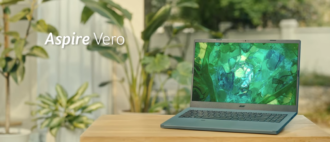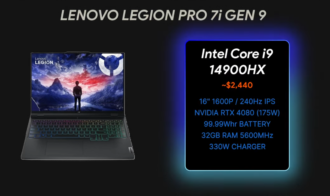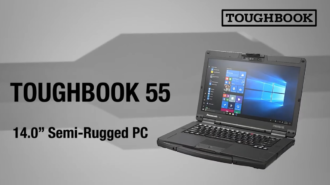Google Pixelbook I7 Review
- 1 Google Pixelbook I7 Specifications
- 1.1 PROS
- 1.2 CONS
- 1.3 Battery Life
- 1.4 Weight and the Durability
- 1.5 Inputs
- 1.6 Value
- 1.7 Review
No one will be surprised to hear that the Google Pixelbook is a good competitor to the Chromebook, but that is exactly what it is. We wouldn’t expect anything less from such an expensive Chromebook, especially since Chrome is a very light operating system. Fair enough, the Google Pixelbook does handle all of our work through the Chrome browser without a hitch, from Google papers and spreadsheets to Slack chat and Lightroom picture editing.
It’s amazing because browsers tend to use a lot of RAM, but Chrome OS seems to have a lot more room in this area than, say, Windows 10 or macOS. The Pixelbook will probably do better on browser benchmarks than Samsung and Asus’s new high-end Chromebooks, but that’s neither here nor there. In real life, you probably won’t notice much difference in speed between the three. This shows how well Chrome OS works with low-power systems.
Google Pixelbook I7 Specifications
| Display | 12.3” 2400×1600 |
| RAM | 8GB or 16GB for seamless multitasking |
| Battery | Up to 10 hours of use |
| Audio | Dual speakers; 4 mics |
| Camera | 720p @ 30FPS |
| Ports | Two USB-C charging, 4k display, and quicker data transfer |
| Safety and Security | TPM Chip for better on device security |
| OS | Chrome OS |
| Weight | 1.11 kg (2.45 lbs) |
| Screen Size | 12.3 Inches |
PROS
- Superb efficiency and runtime.
- Exceptional cameras
- Clean look, and it takes ink well. Display ratio of 3:2
- Two USB Type-C (Thunderbolt 4) ports
- Expandable memory
CONS
- Important extras are still missing.
- No more 5G with a connector for headphones and only the SQ3 processor
Battery Life
The Pixelbook has a shorter battery life than you’re used to seeing on less powerful Chromebooks. Based on “a mix of standby, web browsing, and other use,” the Pixelbook’s product website claims to provide 10 hours of battery life on a full charge.
However, the Pixelbook only lasted 7 hours and 40 minutes in TechRadar’s battery test, which involved playing a locally stored 1080p movie in a loop at 50% brightness and volume with the keyboard backlight and Bluetooth disabled. While impressive in its own right, it falls quite a ways short of Google’s promised timeframe. In the same test, the Asus Chromebook Flip lasted a remarkable 10 hours and 46 minutes, while the Samsung Chromebook Pro lasted only 8 hours and 43 minutes.
Both devices use low-power Intel Core m3 processors, which are more energy-efficient, but the Chromebook Flip’s lower-resolution display likely accounts for most of the difference in battery life. Although the Surface Pro and the 13-inch MacBook Pro both had longer claimed battery lives, the Pixelbook was able to outlast them by 50 minutes and more than an hour, respectively, under synthetic and real-world usage. In addition, owing to USB-C rapid charging, you may get up to two hours of use from only fifteen minutes plugged into an outlet.
Weight and the Durability
The Google Pixelbook i7 is a beautiful and very thin laptop that measures 11.43 inches by 8.69 inches by 0.44 inches and weighs only 2.45 pounds. This is particularly astonishing, considering the whole body is made of aluminum. Its power is significantly superior to that of the Lenovo Chromebook S330.
Inputs
The Google Pixelbook i7 has an extremely limited selection of ports for its users. You can access one audio jack and two USB-C ports on each side of the device. Your gadget may be charged using either one, or you can utilize one to enhance its port capacity. Bluetooth and 802.11ac wireless internet connectivity are also included in it.
Value
Although everything about the Google Pixelbook i7 sounds great, the price might make you think twice about purchasing it as your first laptop. Dropping $1352 may be too rich for your blood. The question that arises next is whether or not it is worthwhile. The powerful Intel Core i7 processor from the 7th generation works well with 16 gigabytes of RAM and 512 gigabytes of storage space. Last but not least, it costs approximately $400 less than the Google Pixelbook Go i5 Chromebook, which is often considered a more capable machine.
Review
The Pixelbook’s full compatibility with Android apps and the Google Play store is arguably its most appealing quality. Additionally, a new app launcher interface interacts with these programs. Yes, the long-awaited Chromebook capable of running Android apps has finally arrived, and it was made possible by none other than Samsung and Asus.
The end effect is a wonderful demonstration of Android’s flexibility. The Android applications we loaded, from Sonic the Hedgehog to the VLC media player, all functioned well and looked gorgeous on the pixel-dense screen. Some configuration windows look like they belong to a mobile device, so there are compatibility issues. But that’s not the fault of the Pixelbook; it’s the app’s fault.
Since you’ll need a place to keep all of these apps and the files they’ll interact with, the Chromebook Pixel’s massive amounts of local storage suddenly make much more sense than before. Google needs a new way to access these applications, and the new Chrome launcher is that interface. This feature, which can be accessed by pressing the button that normally serves as the ‘Caps Lock’ key and by tapping the circular button that sits on the shelf that functions like a taskbar, allows you to quickly browse through all of your programs and launch any one of them with a touch of the screen.
















